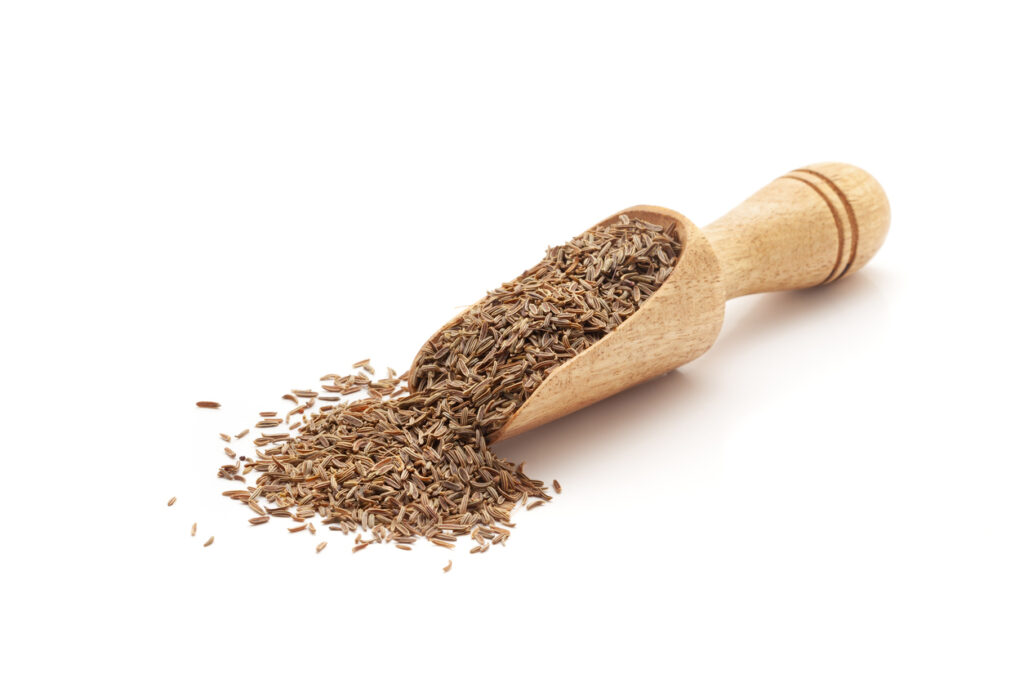Cumin or Jeera is the second most popular spice used world over after black pepper. Cumin is the dried seed of the perennial herb Cuminum cyminum, a member of Apiaceae (parsley) family. Native to Mediterranean region, it is one the spices that has been used since ancient times with records pointing to as early as two millennium BC. During the ancient times, in Egypt cumin was not only used as a spice, but also as a preservative in the process of mummification while Greeks and Romans used it as a table seasoning alongside the salt. Spanish and Portuguese colonists introduced the spice to the Americas, while Arab traders bought it India and Southeast Asia.
Used as whole seed in ground as well as oil and oleoresin form, it has several nutraceutical, medicinal and pharmaceutical properties. Cumin is an essential spice in curries, chutneys, tempering/seasoning, soups, etc. as well as in spice blends like garam masala, curry powders etc. Cumin oil and oleoresin have potential commercial application in food and flavor industries. Apart from the culinary uses, it possesses several medicinal properties and have been known for its innumerable health benefits. Cumin is rich in antioxidants and nutrients. It also contains vitamins such as vitamin A, vitamin C and vitamin E. It aids digestion, strengthens immunity, helps to control diabetes, manage weight etc. It has anti-inflammatory, antimicrobial properties and some studies shows that cumin seeds even have anti-cancer effects.
Source: Spices Board
India is the largest producer of jeera in the world, contributing about 70 percent of world cumin production followed by Syria, Turkey, Iran and UAE. These countries together constitute over 90 percent of the world’s cumin production. Cultivation of jeera in India is mainly concentrated in two states- Rajasthan and Gujarat, which account for about 90 percent of the total production in the country. West Bengal, Madhya Pradesh and Karnataka are the other cumin producing states in the country. Unjha in Gujarat is the main trading centre for Jeera in the country. Rajkot, Patan, Mehsana, Visnagar in Gujarat and Jaipur, Kishangarh, Kekri, Pali, Nagaur, and Jodhpur in Rajasthan are the other key trading centres/spot markets in India.
Source: Spices Board
Jeera is rabi season crop in India. Sowing begins from October to until the beginning of December and harvests by February-March. Depending upon the variety sown and agro-climatic conditions, it may take 80-120 days to mature, and harvesting begins when the crops turn yellow, leaves fall down, and seeds turn light greyish brown. New crop beings to arrive by March.
India is also the largest consumer as well as exporter of the spice. Other major exports are China, UAE, Syria and Turkey. The crop season in India gives it an edge over other countries in the export market as fresh crop in India arrives even before the harvest begins in the other major jeera growing countries. In Syria, sowing begins by January-Feb and is harvested by May-June, while in Turkey and Iran it is sown during February-March and harvested by June-July. China, Bangladesh, UAE, USA and UK are the major imports of Indian cumin.
Source: Spices Board

